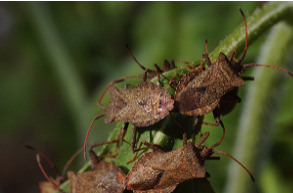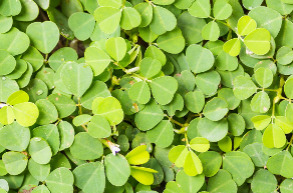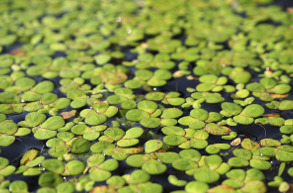Cudweed Control
Most Effective Products
Cudweed Control: How To Get Rid of Cudweed
This page is a general cudweed control guide. Using the products and methods suggested, you will get control of cudweed. Follow this guide and use the recommended products, and we guarantee 100% control of cudweed.
There are many different types of cudweed that can be found in North and South America. Depending on its type, cudweed can be either an annual or biennial weed. This weed is often found growing in warmer climates and some tropical regions.
Cudweed is easily identified by its flat, shiny green leaves. The glossiness of the leaves actually helps in its resistance to herbicides, which makes it very difficult to control.
If you want to get rid of cudweed in your lawn, follow our DIY guide for product suggestions and methods for a quick and effective treatment.
Identification

Correctly identifying cudweed is an essential part of the treatment process. This will ensure that you are using the correct products and methods to effectively get rid of this weed.
Cudweed forms in a rosette shape and has green, glossy leaves. Some species of cudweed have dense white hairs on both sides of their leaves, while other types only have this on the underside of their leaves. Cudweed may appear to be small but can grow a tall stem when spring arrives. These stems may have small flowers on them. Like the underside of the leaves, cudweed stems will also have a fuzzy texture.
Use the description and image above to help you identify cudweed.
Inspection

After identifying cudweed, your next step is inspecting where it is invading your lawn. These areas are where you will be applying treatment.
Where to Inspect
Cudweed commonly grows in clusters on yards, fields or disturbed areas. Cudweed growing in your lawn is often an indicator that your lawn is too sparse and patchy. This could be a result of cutting your grass too short or not giving your lawn sufficient amounts of fertilizer.
What to Look For
Cudweed has green glossy leaves with a fuzzy underside. It will generally start to grow a long stem in the spring. They are active until the end of summer. At this time, cudweed will begin a process called "overwintering". The weed and its seeds will remain dormant in winter until temperatures warm up.
Treatment
After identifying cudweed and inspecting where it is most active in your lawn, you can begin to treat your area. Be sure to wear the proper personal protective equipment (PPE) before handling or applying any product.
The best method of control is using Dismiss Herbicide. It is a selective post-emergent herbicide, so you will apply this product after weeds are noticeable in your lawn. Using a surfactant will enhance most herbicides, but the use of a surfactant with Dismiss is not recommended, due to the risk of discoloring your turf.
For this treatment you will need either a hand pump sprayer, hose-end sprayer, or backpack sprayer. It is also important that you know what type of turf grass you have. The application rate can vary depending on if you are treating a warm or cool season lawn.
Step 1 - Measure the Treatment Area

Before applying any products, calculate the square footage of the area you want to treat. You can do this by multiplying the length and width together (length x width = square footage). This will determine how much product you will need to mix.
The application rate for Dismiss is between 0.092 and 0.18 fl. oz. per 1,000 square feet for cool season grasses and 0.18 to 0.275 fl. oz. per 1,000 square feet for warm season grasses.
For example, if you are treating a 4,000 square foot area of St. Augustine grass at a rate of 0.275 fl. oz. of Dismiss per 1,000 square feet, you would need to mix 1.1 fluid ounces of Dismiss in water. You will want to use enough water adequately provide a uniform spray over the weeds, typically between .05 to 4 gallons of water per 1,000 square feet. For most applications 1 gallon of water can treat 1,000 square feet.
Step 2 - Mix Dismiss

Once you've measured how much Dismiss you will need, you are ready to create a solution. Fill your spray tank halfway with the desired amount of water. Add your measured amount of Dismiss, then add the remaining amount of water to the spray tank. Secure the lid tightly and shake thoroughly to finish creating your solution.
Step 3 - Apply the Solution

After diluting Dismiss in water, you can begin to apply this solution to the area you want to treat. Use a fan-spray setting for even coverage, keeping the nozzle held steady. You want to spray your area until it is wet, but not to the point of runoff. Do not spray Dismiss on landscape ornamental foliage or beds containing dormant bulbs or non-woody perennials.
Prevention
Making sure that cudweed does not come back to infest your lawn is a necessary step in the treatment process. Below are some steps you can take to keep your lawn weed-free.

Cudweed will grow best in damaged or short lawns. You can prevent this weed from returning by making sure your grass is mowed at a height that is not too short. Sometimes lawns are susceptible to weeds because they are malnourished. You can apply fertilizer to your grass, depending on the season.
Key Takeaways
- Cudweed is a persistent weed with glossy leaves that makes it hard to control.
- Control cudweed by diluting Dismiss in water and spraying the solution wherever this weed is present.
- Avoid cutting your grass too short and consider applying fertilizer to your lawn to prevent cudweed from returning.
























































































































































































































































































































































































































































































































